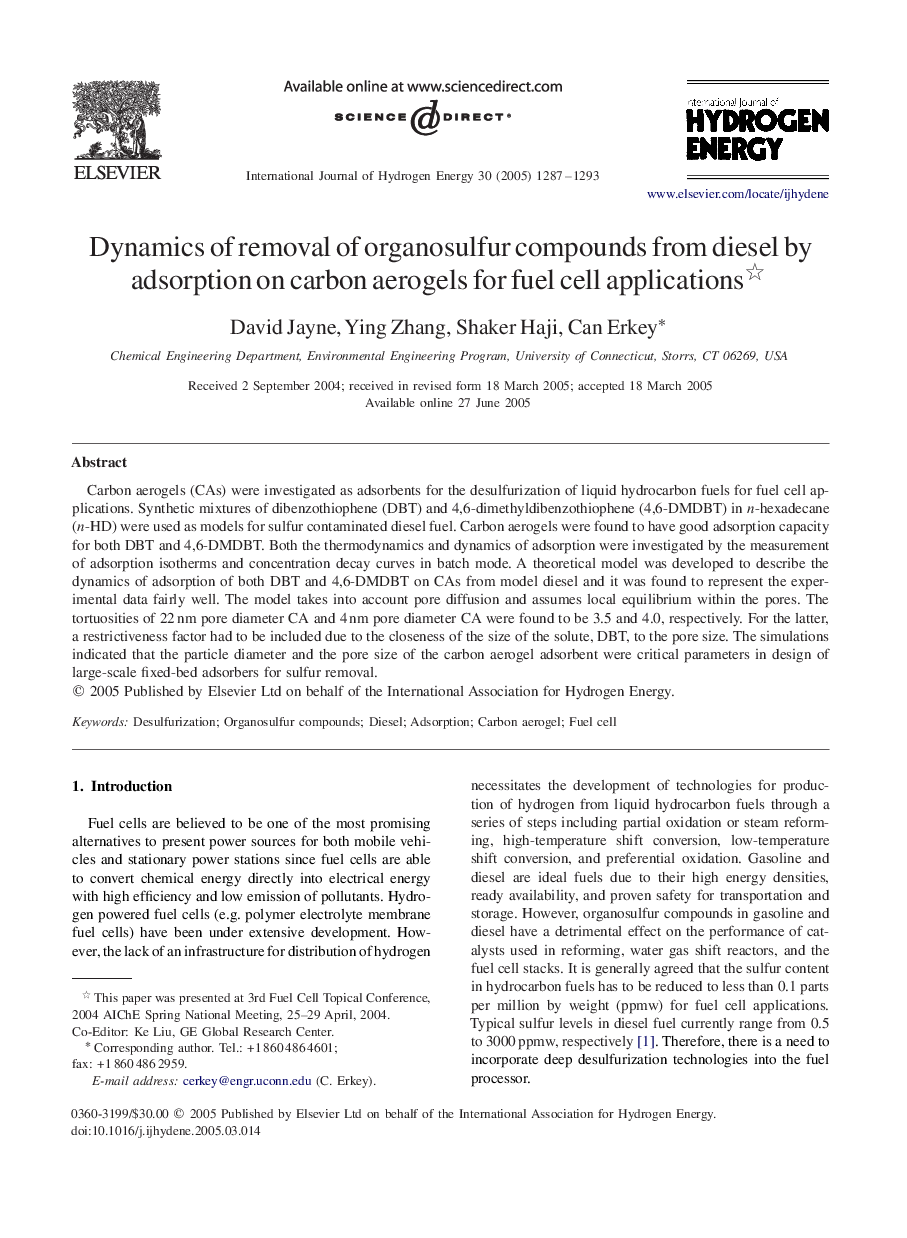| Article ID | Journal | Published Year | Pages | File Type |
|---|---|---|---|---|
| 9759247 | International Journal of Hydrogen Energy | 2005 | 7 Pages |
Abstract
Carbon aerogels (CAs) were investigated as adsorbents for the desulfurization of liquid hydrocarbon fuels for fuel cell applications. Synthetic mixtures of dibenzothiophene (DBT) and 4,6-dimethyldibenzothiophene (4,6-DMDBT) in n-hexadecane (n-HD) were used as models for sulfur contaminated diesel fuel. Carbon aerogels were found to have good adsorption capacity for both DBT and 4,6-DMDBT. Both the thermodynamics and dynamics of adsorption were investigated by the measurement of adsorption isotherms and concentration decay curves in batch mode. A theoretical model was developed to describe the dynamics of adsorption of both DBT and 4,6-DMDBT on CAs from model diesel and it was found to represent the experimental data fairly well. The model takes into account pore diffusion and assumes local equilibrium within the pores. The tortuosities of 22Â nm pore diameter CA and 4Â nm pore diameter CA were found to be 3.5 and 4.0, respectively. For the latter, a restrictiveness factor had to be included due to the closeness of the size of the solute, DBT, to the pore size. The simulations indicated that the particle diameter and the pore size of the carbon aerogel adsorbent were critical parameters in design of large-scale fixed-bed adsorbers for sulfur removal.
Related Topics
Physical Sciences and Engineering
Chemistry
Electrochemistry
Authors
David Jayne, Ying Zhang, Shaker Haji, Can Erkey,
